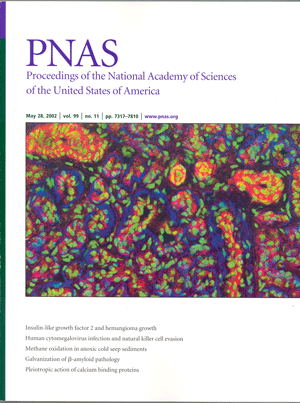Hemangiomas
| Home |
| Research |
| Personnel |
| Publications |
| Funding Acknowledgments |
|
We have used large-scale genomic analysis of human hemangiomas to identify novel potential regulators of hemangioma growth and involution (Ritter,et. al. 2002). Hemangiomas are benign tumors of the vascular endothelium and are the most common tumor of infancy. These tumors are characterized by an initial phase of rapid proliferation which is followed, in most cases, by spontaneous involution. While most lesions resolve without complication, there are some cases in which hemangiomas can be life threatening when occurring near a vital structure. Treatment for these aggressive tumors represents an unmet clinical need. This characteristic progression of hemangiomas through distinct phases provides a unique opportunity for studying endothelial cell biology and angiogenesis. Using DNA microarrays we identified insulin-like growth factor 2 (IGF2) as a potentially important regulator of hemangioma growth. IGF2 was highly expressed during the proliferative phase and substantially decreased during involution. This finding was confirmed at the message level by quantitative RT-PCR and at the protein level by immunohistochemistry. IGF2 protein was localized primarily to tumor vessels or vascular channels. Using a human hemangioma explant model, we show that IGF2 promotes sprouting from intact hemangioma tissue. In addition, several angiogenesis-related factors including integrins alpha v beta 3 and alpha 5 beta 1 are present in proliferating hemangiomas. During the involuting phase, an increase in several interferon-induced genes was observed. These studies provide a foundation on which to build further mechanistic investigations into angiogenesis using hemangiomas as a model. We are currently designing and will shortly implement a prospective, random clinical trial to evaluate the usefulness of systemic IGF2 as a prognostic indicator in children with hemangiomas.
Relevant Publications: Ritter, M., Reinisch, J., Friedlander, S.F., and Friedlander, M. (2006). Myeloid Cells in Infantile Hemangioma and a Possible Surrogate Model. Amer. J. Path. 168: 621-628. Friedlander S.F., Ritter M.R., Friedlander M. (2005). Recent Progress in Our Understanding of the Pathogenesis of Infantile Hemangiomas. Lymphat Res Biol. 2005;3(4):219-225. Ritter, M.R., Hanekamp, S., Dorrell, M.I., Rubens, J., Ney, J., Friedlander, D.F., Bergman, J., Cunningham, B.J., Eichenfield, L., Reinisch, J., Cohen, S., Veccione, T., Holmes, R., Friedlander, S.F., and Friedlander, M. (2004). Identifying potential regulators of infantile hemangioma progression through large-scale expression analysis - A possible role for the immune system and IDO during involution. Lymphatic Research and Biology 1:291-299. Ritter, M., Dorrell, M., Edmonds, J. Friedlander, S., and Friedlander, M. (2002). Insulin-like growth factor 2 and potential regulators of hemangioma growth and involution identified by large-scale expression analysis. Proceedings of the National Academy of Sciences, U.S.A. 99:7455-7460. |
|
| © 2009 The Scripps Research Institute - All Rights Reserved |

